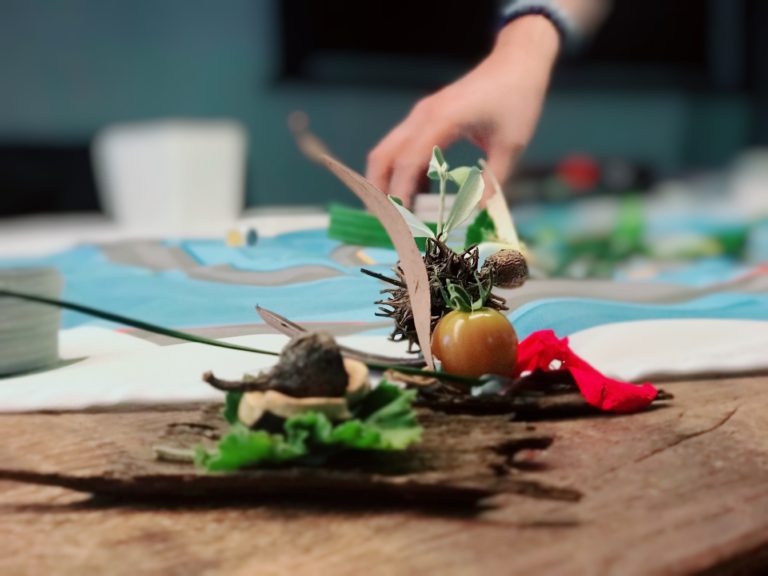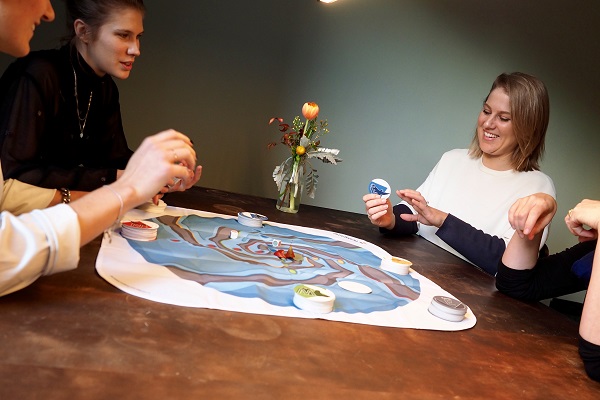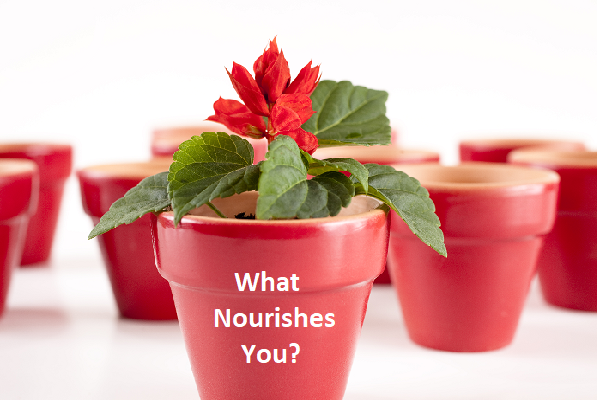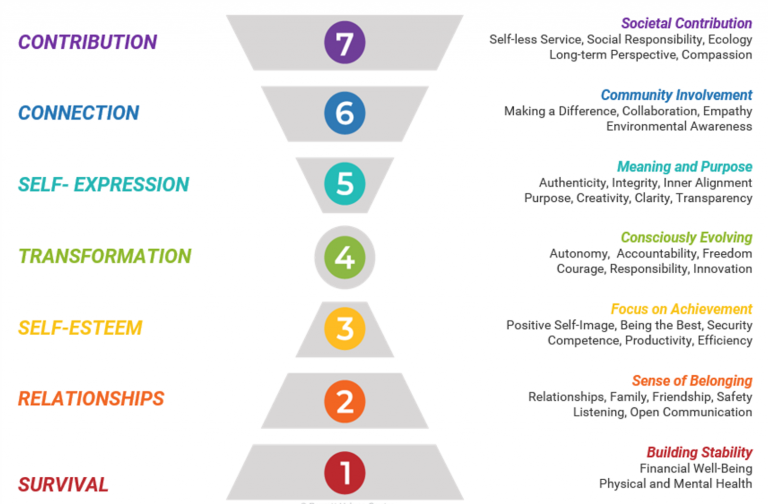Date: 17th May 2019 12pm-5pm
Location: Melbourne CBD
Investment: $250 ex GST
Your co-hosts: Hamish Riddell www.hamishriddell.com and Nicola Vague www.evolvingleaders.com.au
We would love to invite you to a different and powerful development experience. This is the last introductory experience to be offered this year.
This is an introductory session to our Leading with Intent Program leveraging The Flow Game.
We have been personally and professionally benefiting from The Flow Game and we want to share this with other leaders so that you too may get the benefit of this unique experience.
In fact, we believe in the process so much, we are offering a 100% money back guarantee if you do not get personal benefit from this experience we will be happy to refund you!
The flow game is a unique experience where a group of people come together to each gain deep clarity on a question that matters to them. Designed for leaders the game is custom made for each participant. Over the course of 4.5 hours, questions combined with joint reflection and a sharing of knowledge and experiences among the players help reignite “flow”. The game is designed to inspire your reflection, thinking and courage. Read more...
Date: 21st Feb 2019 4pm-6.30pm
Location: Melbourne CBD
Investment: $50 ex GST
Facilitator: Nicola Vague
Our first event was held in February and after such a special gathering this is a repeat of that event. Included is a screening of Sensitive The Untold Story based on the groundbreaking work of Elaine Aron and a space for HSP leaders to come together to reflect and connect.
We look forward to welcoming you to the Evolving Leaders – HSP community.
You can read more about HSP’s and our work with HSP’s by visiting:
Dates: 29th March 2019 12pm-5pm
Location: Melbourne CBD
Investment: $250 ex GST
Your co-hosts: Hamish Riddell www.hamishriddell.com and Nicola Vague www.evolvingleaders.com.au
We would love to invite you to a different and powerful development experience.
This is an introductory session to our Leading with Intent Program leveraging The Flow Game. We have been personally and professionally benefiting from The Flow Game and we want to share this with other leaders so that you too may get the benefit of this unique experience.
In fact, we believe in the process so much, we are offering a 100% money back guarantee if you do not get personal benefit from this experience we will be happy to refund you!
The flow game is a unique experience where a group of people come together to each gain deep clarity on a question that matters to them. Designed for leaders the game is custom made for each participant. Over the course of 4.5 hours, questions combined with joint reflection and a sharing of knowledge and experiences among the players help reignite “flow”. The game is designed to inspire your reflection, thinking and courage. Read more...
This post is about an idea called ‘The Circles’ from a little book by the same name. It invites the reader to reflect on the people they place in their first circle and to make a conscious choice about whether that’s working well or might need a some change.
I stumbled across a little book collecting dust on my daughter’s bookshelf. It’s called The Circles and was written by well-known Australian actor Kerry Armstrong. The purpose of the book is to help the reader to take a helicopter view of their feelings towards friends, family and colleagues and to map them to one of seven concentric circles.
I’ve found the book helpful as a ‘check in’ for myself, and I thought it may be useful for you too – particularly as we enter a time of the year when, hopefully, most of us will find some time for reflection.
Each of the seven circles in the book represents where people are in your life and your relationships to them. The first circle is for those people who make you feel good about yourself, while the seventh circle is for the people you find most challenging. The author is quick to mention that who you place in each circle is entirely up to you, and that it’s important for you to know that this will change – and that you can choose to make changes at any time.
In this post I want to focus on the first circle.
The author explains that the first circle, the one right in the middle, is where you get to express all your hopes, dreams and thoughts. She invites you to put yourself in the centre of that circle and ask yourself:
Who knows me here?
Who can I trust with my life, my thoughts, my dreams?
Who makes me feel free to be myself?
In other words, who would you have inside that first circle with you?
Perhaps you might like to take a moment to do that for yourself? What do you notice?
The Circles got me thinking about and truly appreciating the people who are in my first circle. It also got me reflecting back to a time in my life when I didn’t even know that was missing. It took me many years to find my tribe and it was a surprising lesson to learn that, in the main, my tribe is not my family. (This is something I will share with you in a future post.)
The book also got me thinking about how supportive and enabling it is to have people in my first circle, how these people have helped me (and continue to help me) navigate the complexities of life situations and depths of emotion that I regularly experience (exacerbated by being a highly sensitive person, or HSP).
Just knowing that I can share absolutely anything with someone in my first circle without being judged; that I can pick up the phone to one of them at any time and have a much-needed rant or cry or laugh or celebration and will always be meet with unconditional love. This is such a liberating feeling. Not surprisingly, this type of arrangement is often reciprocated, especially with my first circle friends. (It has taken years of getting to know myself better to be able to begin to cultivate this.)
I haven’t written this post as a ‘you must be like me and have someone in the first circle’ rant. It is important to acknowledge that some people, for a variety of reasons, prefer to stand in the first circle alone, and that may well be exactly what works for them. We are all different so as long as we are choosing consciously what works for us and making changes when things don’t work for us, the rest is irrelevant.
However, for me having company inside that circle does matter. Any here’s why:
As human beings, we are designed to ‘feel’. Part of managing ‘feeling’ is having someone with whom you are completely comfortable and safe expressing how it is that you are feeling. Someone who won’t judge you or blame you, who won’t try to fix you and who is available to listen deeply to you. That’s how we move through strong emotions and in doing so learn about ourselves and the world around us: by expressing them.
For those who are happy alone inside the first circle, they may find that expressing their feelings somewhere – through journaling or creative expression of some kind, for instance – is enough. But for me and many others, it needs to be another person.
However you do it, it is important that we regularly express how we are feeling in some way. If we start to hold onto all of our worries, literally inside our bodies, this affects our physical, mental and emotional wellbeing. We can get sick, lose sleep, worry unnecessarily. If we have a predisposition towards mental illness, the inability to express feelings can be a trigger for that too.
I encourage you to take the opportunity to ponder and consider: Who is in your first circle and is that working well for you? Or is there an opportunity for an overhaul?
In my next post I will share some tips for attracting the tribe that is perfect for you.
This post explores the power of three simple words: ‘What nourishes you?’ I consider these words in the context of personal reflection, to deepen connection with one’s internal motivation for self-care. I also explore them with an application of symbol cards and as a conversation opener and shifter to a topic that matters and strengthens connection.
At a recent leadership conference themed around connection, we began with a conversation around this question: What nourishes you?
These three simple words quickly bypassed the minds and engaged the hearts of the group as people pondered and shared their responses. Feedback from the group indicated that they loved the question and were delighted at how it offered a fresh internal insight and perspective, taking conversation with their partner into new terrain.
The reaction of this group was the same as that I have seen with many individual leaders and teams who are asked the same question. Which raises a red flag. Why do we not ask ourselves this question? Why do we not ask it of each other?
If we are walking and leading in life without bringing attention to what nourishes us, how can we know what form of self-care is right for us on the path towards wellbeing? How can we know what needs to change?
These three little words – ‘What nourishes you?’ – are a great place to start with your personal enquiry, bringing greater focus to your own self-care.
A case study: the horse, the ocean and the mirror
 I have been successfully using the ‘What nourishes you?’ question in different applications across a decade or more. I want to share an extended version of this application that deepens the individual’s inquiry.
I have been successfully using the ‘What nourishes you?’ question in different applications across a decade or more. I want to share an extended version of this application that deepens the individual’s inquiry.
During my training to become an art therapist, I worked with a 20-year-old client who had a history of anxiety and depression. She had spent many years under the care of psychologists and a psychiatrist. She wanted to try a different approach.
Through the use of symbol cards we explored ‘What nourishes you?’. Somewhat surprising to me at the time, it turned out that in over a decade or more of therapy this woman had never been asked a question filled with such possibility. Rather, she had found herself rehashing the problems of her life again and again.
“Symbols evoke profound emotions and memories, often without our making rational or conscious connections. They surround us and they help navigate through life, providing short cuts to understandings, ideas and feelings … the use of visual images can assist a client to get in touch with otherwise inaccessible personal realities” – www.innovativeresources.com
How does it work?
By asking ‘What nourishes you?’ and inviting a spontaneous selection of symbols as a response, we bypass the left logical brain (our verbal language centre) and instead access our right-brain intelligence. This is our creative side, so accessing it invites a deeper knowing – something from our unconscious self – to emerge.
I recall a beautiful moment when this young woman selected three symbol cards: the horse, the ocean and the mirror. She was still. Emotion rising. We sat there together in the magic of this moment. Something shifted within her inner experience and possibility. Life beckoned.
What began as a symbol exercise about ‘What nourishes you?’ turned into a deeper exploration and ultimately deep clarity and insight into how this young woman wanted to be in the world. Standing tall, centred and powerfully on her own feet like the horse; loving who she saw when she looked in the mirror and not shrinking when she met the world; and feeling free like she felt in the ocean.
This young lady experienced a connection with her internal navigation system and connected with how she wanted to be in the world. This was an unlocking of something previously locked so tight it was not available to her.
Application to learning and leadership development
While clearly this specific experience was within a therapeutic situation, I use symbol cards with project teams that are misaligned and off course and as a conversation starter, connector and to bypass mental chatter in leadership development. (NB. the actual question I ask will depend on the specific learning context, for example, in a recent leadership development program in which we were exploring change, the question was “What is Change?”, using the symbol cards to invite a deeper response to this question. Similarly, with project teams that are stuck – I might ask “How do you feel?”, which invites the individual’s experience of what is going right/wrong with the project to surface so that everyone’s voice is heard and the team can navigate next steps from an authentic place.)
This application of symbol cards – as an adjunct to coaching or team development – is broadly available and accessible to coaches and facilitators. I have included the link here to buy your own set of symbol cards if you feel inspired to give symbols a go.
What nourishes you? – getting started
Whether you are a coach, facilitator, leader or person wanting to build connection, I encourage you to ignite this conversation in your team, your family and as a conversation starter in any context:
- Start close in: ask yourself ‘What nourishes me?’; ‘Where is that in my life right now?’; ‘How much time and energy over the past week has been allocated for my own self-care?’; ‘What needs to change?’ Commit to one small step today that will take you a step closer on the path toward wellbeing in life and leadership.
- Ignite the conversation in your team and with the people closest to you in your life by asking the question often: ‘What nourishes you?’ or use the symbol card process to ignite another important question for example, “How do you feel”?
- Coach, therapist or facilitator? Consider incorporating symbol cards into your practice with the ‘What nourishes you?’ question and many more.
To commit to self-care is to value yourself, your relationships, your professional work. Self-care is a choice you make. It starts with you. These three little words – ‘What nourishes you?’ – are a great place to start with your personal inquiry and as a conversation opener and shifter to a topic that matters.
This post explores the importance of knowing and harnessing your personal values as a key navigation system in life and leadership.
Deep down inside what is important to you? What do you want your life to stand for? What sort of qualities do you want to cultivate as a person? How do you want to be in your relationship with others? What matters to you?
In every area of life we make decisions and choices based on what is important to us. This includes what we value as individuals as well as what we absorb of the spoken and unspoken expectations of the communities and organisations of which we are a part.
We are often unaware of the mix and interplay of values that motivate us to act, and that inform our decisions. In organisations, lists of values are more often statements of intent than accurate reflections of how things are really done. Even where the intent is genuine, the greater the gap between words and action the greater the perception of a lack of integrity, resulting in cynicism and disengagement.
Through the process of clarifying our core values – our heart’s deepest desires for how each of us wants to behave as a human being – and using those values to motivate, inspire and guide our ongoing actions, we grow as people and develop our capacity and capability as leaders.
Our bodies know when we act out of alignment from our values
Just as it is within a organisation, it’s critical that our actions are in concert with our core values. Aside from this being important for our integrity, often our bodies will react when we act out of alignment with our personal values. Perhaps you can recall a time when you have felt a pain in the chest or tightness in the belly in such a situation?
I recently coached a senior leader from the professional services sector with the specific brief of developing his capacity and capability to have courageous conversations. He was deeply aware that there was a conversation he needed to have with a member of his team – and should have had months ago – and that the longer he left it the more impact his lack of action was having on the broader team.
However, he felt ill equipped and fearful of having this conversation. He also felt that he was out of integrity with himself in not finding the courage to have it, and that this inner conflict was having a physical and behavioural affect on him.
Limiting values impact how we ‘show up’
As part of our coaching this leader completed a Personal Values Assessment and amongst his list of positive personal values, he had selected a limiting value of ‘being liked’. We explored this value and unpacked the impact that it was having on how he was leading his team overall and specifically with respect to this difficult conversation he had been putting off.
This leader had a good level of personal awareness and he was able to identify that his needing to ‘be liked’ probably stemmed from his childhood place in his family and the wider family dynamics. The power here was for him to see this value written on the page and to directly draw the link to see how the need to be liked was holding him back from having a difficult conversation. More broadly, this value was keeping him from becoming a better version of himself.
Through support and planning for this conversation, this leader was able to lean into his own discomfort (it hadn’t gone away – he just decided to acknowledge it and take action anyway). He had the conversation, and while it was difficult it was ultimately a great gift for both the leader and his team member.
This is an example of how when we want to change behaviour we need to look below the surface to our mindsets, beliefs and values and see what is actually driving our behaviours. From there we can create change.
This leader went a step further and embarked upon a personal values assessment for his direct reports along with a facilitated personal values learning and development session that included him sharing his own journey with the need to ‘be liked’. The group session allowed the team to began to look at the personal values they had in common as a way of building connection and focus and moving toward getting clearer on team values.
Values – based leadership keeps us centered and focused
“Values based leadership and values-based decision making allows us to throw away our rule books. When a group of people espouse an agreed set of values and understand which behaviours support those values, then you no longer need to rely on bureaucratic procedures setting out what people should or should not do in specific situations. All the rules reduce to one—live the values. People can work out for themselves what they need to do, and in so doing become responsible and accountable for their behaviours.” – Richard Barrett
The benefits of becoming a values-driven leader are:
- Leaders become conscious about what drives their decision making and can move towards values-based decision making – a key step in authentic leadership as it transcends personal beliefs.
- Leaders better understand who they are and what’s important to them and why they are motivated or inspired by some things and challenged by others.
- Leaders better understand their people and can design for and create a workplace that maximises engagement and fulfilment.
- Values provide a compass for leaders: a reference point to inform direction, guide how they engage and inspire their teams and how and why they make certain decisions.
Source: Adapted from work of Richard Barrett, Barrett Values Centre
Values have significant power to unite and energise people. Shared values can connect, where race, religion, politics and gender can divide. Becoming a values-driven leader means understanding what is important to you personally and collectively and being committed to acting on those values.
Interested in leveraging values to ignite growth in your organisation? At Evolving Leaders, we support you to unlock the power of values using the Barrett Values Centre Cultural Transformation Tools (CTT) to measure leadership and team values and culture through:
1. Executive Coaching: Leadership Values Assessment and Development
2. Team Culture Assessment and Development: measuring and managing your team’s culture using the Cultural Transformation Tools to surface the invisible factors driving performance and engagement to grow a psychologically safe team culture and strengthen team performance.
There was a period in my life when I found myself in a state of overwhelm – the type of overwhelm that everyone else can see except the person being overwhelmed (i.e. myself). I wouldn’t recognise it until some time later. During this time, a leadership coach introduced me to the concept of ‘mental real estate’. It was a classic ‘light bulb’ moment.
Our mental real estate is the capacity we have to hold onto, manage and navigate everything in our lives. Our work, our relationships, our family. Our day-to-day responsibilities in the many roles that each of us have: leader, partner, parent, sibling, child, friend, colleague etc. Perhaps our community work or volunteer work at school or elsewhere.
Mental real estate is not an infinite resource
The thing about mental real estate is that it’s not an infinite resource. The amount each of us has is finite.
Just like ‘real’ real estate, mental real estate has boundaries that can’t be expanded. The more we commit to extra things in our lives – the more we say ‘yes’ to every request or offer – the more our mind starts to push up against those boundaries.
Eventually it becomes like overpacking a suitcase and then still trying to get more in: something has to give. This is where we are over committed.
The impact of this situation will be familiar to many leaders and other busy people. We start to lose focus on the things that really matter to us. We get locked into ‘thinking and doing’; we lose the ability to ‘feel and be’. We become overwhelmed, as I was. Stuck on a treadmill, we become overly stressed – certainly stressed beyond a healthy level – and start making poor decisions. This diminishes our wellbeing and starts to affect our happiness, relationships and overall performance.
It’s important to realise that, just like the real estate we live in, a lot of what is crowding our minds in these situations is clutter we don’t really need. As many as 80 per cent of the thoughts we have each day can be unhelpful in the sense that they aren’t moving us toward the life we want to lead. All this mental clutter gets in the way of our ability to thinking clearly and making good decisions and can lead to unnecessary overwhelm. Reserving as much mental real estate as you can for the stuff that actually matters is the key here.
Take a moment to reflect on your own mental real estate
I invite you to take a moment to reflect on the three things that matter most to you in your life: the things that make you feel full, happy and satisfied.
Now ‘zoom out’ to take in everything that you have on your plate right now. All the tasks and roles that you are (or feel) responsible for right now.
Is there an alignment? Is the stuff that is keeping you busy, and therefore occupying most of your mental real estate, contributing to those things that are most important to you? Are you making a concerted effort to ensure that some of your mental real estate is reserved for those important aspects of your life?
Or is this exercise simply too hard due to your mental real estate being overcrowded?
What do you notice?
Does something need to change?
When I did this exercise some years back, I noticed that I the things that my focus was definitely no on those things that mattered the most to me. They were struggling for a place in my mental real estate, and as a result I had little clarity of thought and was making poor decisions. To help get me back on track, I called upon a personal values assessment.
Taking the time to explore your personal values and beliefs is a great way to get started on an ‘audit’ of your mental real estate. This process can guide you back to what is most important to you, and from that place you will be better equipped to make conscious choices about what needs to be let go of to clear a bit of space in your mental real estate.
You also might like to consider the completion of a Global Leadership Wellbeing Survey (GLWS). This survey will help you understand your state of wellbeing at work and at home. It will help check in on your available mental real estate. The survey is supported through a debrief and development conversation to help you ‘tidy up’ your mental real estate, establish a sustainable self-care rhythm and show up as a better version of you.
Our mental real estate is a precious commodity. Do what you can to keep yours tidy, ordered and not too cluttered.
Through the lens of a client case study, this post explores why we must look beneath the presenting problem in any team or organisational challenge to surface the invisible aspects of the system that are driving what we see on the surface. This is the key to unlocking previously unavailable energy in the system to drive performance and engagement and grow a healthy team culture.
I recently had a call from a small business owner in the healthcare sector whose enterprise was expanding at quite a rapid pace. He told me that one of his managers was not communicating effectively with the team and that this was causing lots of unrest and dissatisfaction.
We explored various approaches to the situation, including individual coaching for the manager in question. However there had been no previous investment in employee development in the company. I was concerned about the possibility of broader ‘invisible’ issues that might have been contributing to what was going on.
I suggested that rather than focusing on this one manager, this was a great opportunity to do an engagement survey and culture and values assessment across the business. This would help identify any such invisible components of what was playing out in the organisation’s culture. It would also take the whole team on a collaborative learning journey which would help them over the next phase of growth.
The Team Culture Assessment
The assessment we carried out used the Barrett Values Centre Team Culture Assessment along with a simple engagement survey (underpinned by our version of the Get Connected Model as a broader framework).
After these assessments, we work-shopped the results as a group. The data provided the basis for the team to come together, to learn about each other and to engage in dialogue that surfaced how people were feeling and what they were experiencing. This allowed discussion about what was working well and what was getting in the way of performance and engagement. It enabled the group to collectively discover what needed to change and how to go about that.
A significant issue raised by the data was a level of cultural entropy of 25%. Cultural entropy indicates the amount of dysfunction in the organisation system, and this level reflected significant issues requiring immediate attention.
The top collective personal values of the group included caring, honesty, fairness, respect and humour/fun. Personal values tell us what is important to people in their personal lives. This is vital data that allows you to build a culture in which people feel they belong. This group loved learning about what mattered to each other, while the opportunity to share new things about themselves built stronger connection between them all.
Another aspect of culture measured in our assessment are the current culture values. These provide a picture of how people are experiencing the team or organisation at the moment. They show us what is working well and what is undermining engagement and performance. The strengths of the current culture for this group were humour/fun and teamwork, competence, cost effectiveness and efficiency. The limiting values were blame, control and hierarchy.
Unsurprisingly, given the personal values of this group, their desired culture included fairness and honesty along with maintaining the humour/fun that already played an important role in the workplace. Values of ‘blame-free’, compassion and teamwork were also important.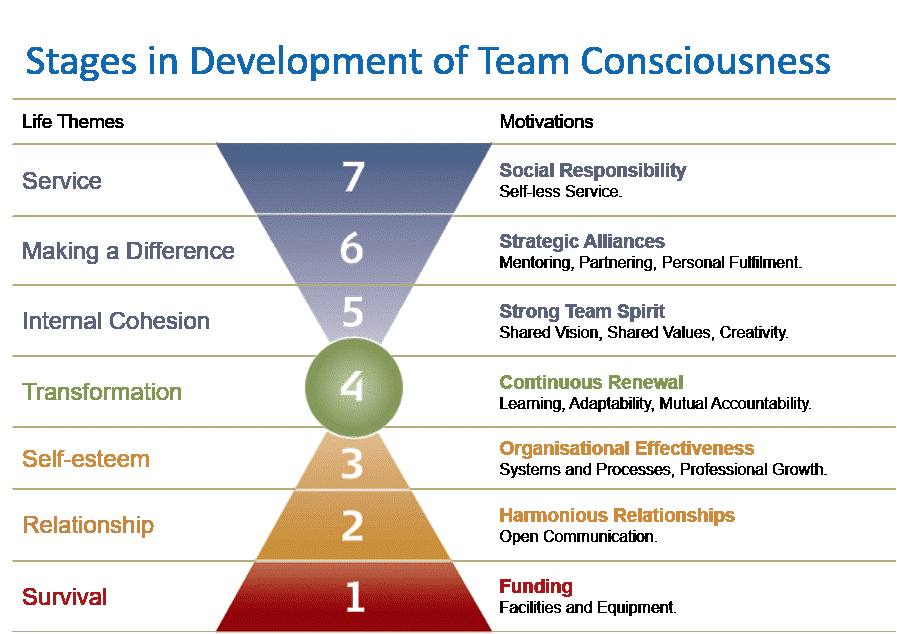
Surfacing the invisible to solve the visible
All these discussions allowed us to surface the invisible forces that were contributing to the original problem: the manager who it was felt was not communicating effectively. Without directly blaming or judging any one person, we were able to engage in dialogue and facilitate personal learning towards the desired culture. Subsequent leadership coaching supported the senior leaders to deepen their personal insights into how they were contributing to the current culture and how they could make changes to their own behaviour towards that desired culture.
During this process one of the key people in the business resigned. Change happens when we engage in dialogue and set a new level of expectations, but unfortunately for some this journey is uncomfortable and they make a personal choice to leave. In my experience, when that happens it is often the best outcome for both the individual and the team.
The immediate changes that resulted from our work with this group (over a three-month period) included:
- regular team meetings were established in which people could all receive the same message
- the ISO accreditation process, which had been dependant on a key individual, was re-scoped into a team project, including participants who were front line employees
- front line employees were given new responsibilities as part of their development
- regular performance conversations were established.
Comments from some of the participants included:
‘I feel relieved that [the tensions] are out in the open and that we can now talk about the issues.’
‘I feel a closeness, a coming together, through talking and taking time with one another. It feels more like a team.’
‘I feel happy that we are getting somewhere and that it feels like a good direction.’
Culture transformation is a dynamic journey. The commitment by the leader in this case to invest in this work was a powerful step towards improving the workplace culture, as was working towards a values-based organisation. A values-based organisation builds trust, while values-based decision making is the best approach to navigating complexity and dealing with uncertainty. It makes us focus on our human needs.
Do you understand the invisible factors that driving performance, engagement and wellbeing in your team or organisation?
For more information on our culture and values assessments, visit this page or contact us?


